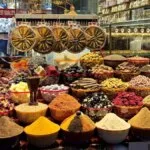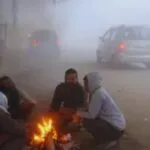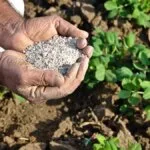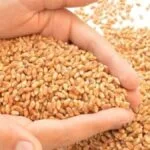Main Points In Hindi (मुख्य बातें – हिंदी में)
-
कृषि क्षेत्र की विकास की योजना: अल्जीरिया ने 2023-2024 मौसम में कृषि क्षेत्र के सकल घरेलू उत्पाद (GDP) में 35 बिलियन डॉलर से अधिक की वृद्धि की है, जो सूखे के बावजूद अधिकारियों द्वारा तैयार की गई रणनीति का परिणाम है।
-
खाद्य सुरक्षा के लिए योजनाएँ: सरकार ने खाद्य सुरक्षा में सुधार के लिए कई बड़े प्रोजेक्ट्स की शुरुआत की है, जैसे दूध पाउडर उत्पादन के लिए कतर के साथ 3.5 बिलियन डॉलर का समझौता और इटली के साथ अनाज और पास्ता के लिए 420 मिलियन यूरो का प्रोजेक्ट।
-
गेहूं में आत्मनिर्भरता का लक्ष्य: अल्जीरिया सरकार गेहूं के उत्पादन में आत्मनिर्भरता हासिल करने के लिए प्रयास कर रही है, विशेष रूप से पिछले साल के अच्छे उत्पादन के बाद, जिससे घरेलू मांग का 80% पूरा हुआ।
-
दक्षिणी क्षेत्रों पर ध्यान: अल्जीरियाई सरकार ने अपनी कृषि रणनीति में दक्षिणी क्षेत्रों पर ध्यान केंद्रित किया है, जहां भूमि और जल संसाधनों की प्रचुरता है, जिससे खाद्य उत्पादन को बढ़ावा मिलेगा।
- कृषि परिसंपत्तियों का विकास: अल्जीरिया सरकार कृषि क्षेत्र के विकास को बढ़ावा देने के लिए अपनी कृषि परिसंपत्तियों को सुधारने और नीति बनाने की योजना बना रही है, जो लंबे समय से तेल और गैस पर निर्भरता के कारण उपेक्षित रही हैं।
Main Points In English(मुख्य बातें – अंग्रेज़ी में)
Here are the main points summarized from the provided text about Algeria’s agricultural sector:
-
Growth in Agricultural GDP: Algeria reported an increase in the agricultural sector’s gross domestic product (GDP) value, exceeding $35 billion during the 2023-2024 season, despite challenges from drought. This achievement is attributed to an ambitious strategy implemented by the authorities to enhance the sector’s contribution.
-
Government Initiatives for Food Security: The Algerian government is implementing a strategic plan to improve food security, including a $3.5 billion project with Qatar for powdered milk production, which aims to fulfill 50% of the local milk market’s needs. Additionally, there is a significant investment project with Italy focused on grains, dry vegetables, and pasta.
-
Emphasis on Self-Sufficiency: Authorities aim to achieve self-sufficiency in wheat, especially following a productive year covering 80% of domestic demand. The government is also promoting agricultural activities in southern regions, capitalizing on available land and water resources.
-
Economic Diversification Efforts: Due to past over-reliance on oil and gas, the authorities are focusing on developing agricultural assets to enhance economic diversification while creating better policies for farmers and stakeholders in the sector.
- Challenges with Food Sufficiency: Despite having over one million agricultural and livestock farms, Algeria faces issues such as drought that hinder food sufficiency, leading to a reliance on wheat imports, which constitute a significant portion of the annual food requirements (7 to 11 million tons).


Complete News In Hindi(पूरी खबर – हिंदी में)
अल्जीरिया ने कृषि क्षेत्र के सकल घरेलू उत्पाद के मूल्य में वृद्धि दर्ज की है2023-2024 सीज़न के दौरान लगभग 35 बिलियन डॉलर से अधिक। यह सूखे से उत्पन्न चुनौतियों के बावजूद इस क्षेत्र की भूमिका को अधिकतम करने के लिए अधिकारियों द्वारा तैयार की गई एक महत्वाकांक्षी रणनीति की बदौलत हासिल किया गया है।
जलवायु परिवर्तन के प्रभावों ने कृषि की प्रगति को बढ़ावा देने और तेज करने की आवश्यकता पर प्रकाश डाला है, क्योंकि इसे अभी भी एक महत्वपूर्ण क्षेत्र के रूप में कई प्रोत्साहनों की आवश्यकता है जो निर्धारित लक्ष्यों को प्राप्त करने में बाधाओं के बावजूद आबादी के लिए भोजन सुनिश्चित करता है और रोजगार के अवसर पैदा करता है।
यही कारण है कि सरकार अगले चरण के दौरान इस क्षेत्र को आगे बढ़ाने की कोशिश कर रही है, हालांकि आर्थिक विकास में इसके योगदान पर संदेह पैदा होता है देश की क्षमता उसे विकास में बड़ी भूमिका निभाने में सक्षम बनाती है।
वर्तमान में, कृषि मंत्री यूसुफ चरफ़ा के आंकड़ों के अनुसार, कृषि क्षेत्र से प्राप्त राजस्व देश की जीडीपी का 18% है।
अल्जीरियाई के अनुसार, उन्होंने कहा, ‘सरकार देश के दक्षिण में रेगिस्तान में 1.3 मिलियन हेक्टेयर सिंचित भूमि तक पहुंचने के लक्ष्य के साथ सिंचाई के माध्यम से भूमि को पुनः प्राप्त करने के लिए काम कर रही है, जिसे अनाज और रणनीतिक फसलों के लिए आवंटित किया जाएगा।’ समाचार अभिकर्तत्व।
अल्जीरिया खाद्य सुरक्षा में सुधार के लिए एक रणनीतिक योजना लागू कर रहा है. इस रणनीति के हिस्से के रूप में, पिछले अप्रैल में उसने कतर के साथ 3.5 बिलियन डॉलर से अधिक की लागत वाली एक विशाल दूध पाउडर उत्पादन परियोजना स्थापित करने के लिए एक समझौते पर हस्ताक्षर किए।
कतरी फूड एंड डेयरी कंपनी (बालाडना) के साथ हस्ताक्षरित इस पहल का लक्ष्य अल्जीरियाई दूध बाजार की 50% जरूरतों को पूरा करना है, क्योंकि यह परियोजना रेगिस्तानी राज्य अद्रार में 117,000 हेक्टेयर क्षेत्र में लागू की जाएगी।
इसी योजना के तहत अल्जीरिया ने भी पिछले जुलाई में इटली के साथ अनाज, सूखी सब्जियां और पास्ता क्षेत्र में 420 मिलियन यूरो की एक बड़ी परियोजना के कार्यान्वयन के लिए एक समझौता किया था।
इस परियोजना से मदद मिलने की उम्मीद है सूखे अनाज और दालों के स्थानीय उत्पादन में सुधार और इन उत्पादों के निर्यात में वृद्धि।
खाद्य सुरक्षा में सुधार के लिए अल्जीरिया की रणनीतिक योजना अनाज, सूखी दालें, चीनी और तिलहन पौधे, बीज और दूध सहित रणनीतिक क्षेत्रों के विकास के लिए राष्ट्रीय योजना के कार्यान्वयन को निर्धारित करती है।
अधिकारियों का लक्ष्य गेहूं में आत्मनिर्भरता हासिल करना भी हैविशेष रूप से इस वर्ष के महत्वपूर्ण उत्पादन के बाद, जिसने घरेलू मांग का 80% कवर किया।
हाल के वर्षों में, जगह और भूजल की प्रचुरता के कारण कृषि गतिविधियों को प्रोत्साहित करने के लिए अल्जीयर्स ने दक्षिणी क्षेत्रों पर ध्यान केंद्रित किया है।
इस निर्णय ने बिस्क्रा, वाडी सौफ और मेनिया जैसे रेगिस्तानी राज्यों को स्थानीय जरूरतों को पूरा करने के लिए खाद्य केंद्र में बदल दिया, खासकर सूखे के कारण उत्तर में घटती गतिविधि के मद्देनजर।
सरकार इस क्षेत्र के विकास की आशा में अपनी कृषि परिसंपत्तियों को बढ़ावा देना चाह रही हैजो कई वर्षों से तेल और गैस पर अत्यधिक निर्भरता के कारण पड़ोसी देशों की तुलना में राज्य के ध्यान से दूर रहा है।
अल्जीरियाई अधिकारियों के लिए, इस निर्णय का उद्देश्य सतत विकास उद्देश्यों के भीतर यथार्थवादी संकेतक स्थापित करते हुए कृषि की वास्तविकता की बेहतर समझ हासिल करना है। इस रणनीतिक क्षेत्र में किसानों और अभिनेताओं की सेवा के लिए नीतियां डिजाइन करना।
ऐसा अनुमान है कि अल्जीरिया में दस लाख से अधिक कृषि और पशुधन फार्म हैं, हालांकि ऐसा लगता है कि वे खाद्य पर्याप्तता हासिल करने के लिए पर्याप्त नहीं हैं।. इसके सामने आने वाली समस्याओं में से एक सूखा है। इस समस्या ने फसल उत्पादकता को प्रभावित किया है, जिससे अल्जीरिया को अपनी वार्षिक खाद्य जरूरतों का लगभग 30% तक आपूर्ति बढ़ाने में मदद मिली है, जिसका नेतृत्व गेहूं ने किया है, जिसकी कीमत 10 बिलियन डॉलर तक है।
संयुक्त राष्ट्र खाद्य और कृषि संगठन (एफएओ) ओपेक सदस्य देश को दुनिया में चौथा और अफ्रीका में दूसरा स्थान देता है। गेहूं के सबसे बड़े आयातक, जिनकी वार्षिक दर 7 से 11 मिलियन टन के बीच है।
स्थानीय बाजार में सालाना 9 से 12 मिलियन टन ड्यूरम और नरम गेहूं की खपत होती है, जिसमें से अधिकांश आयात किया जाता है, खासकर फ्रांसीसी और कनाडाई बाजारों से।
Complete News In English(पूरी खबर – अंग्रेज़ी में)
Algeria has noted an increase in the agricultural sector’s contribution to its GDP during the 2023-2024 season, surpassing 35 billion dollars. This achievement is due to an ambitious strategy developed by the authorities to maximize the sector’s role, even amidst challenges posed by drought.
The impact of climate change has highlighted the need to enhance and accelerate agricultural progress. The agriculture sector still requires significant support and incentives to overcome obstacles and ensure food security for the population while creating job opportunities.
This is why the government is trying to advance the sector in the next phase, despite doubts about its contribution to economic growth. However, the country’s capacity enables it to play a significant role in development.
Currently, according to Agricultural Minister Yusuf Cherfa, revenue from the agricultural sector accounts for 18% of the country’s GDP.
As stated by Algerian officials, “The government is working to reclaim 1.3 million hectares of irrigated land in the desert region of southern Algeria, which will be allocated for grain and strategic crops.”
Algeria is implementing a strategic plan to improve food security. As part of this strategy, last April, it signed an agreement with Qatar for a massive powdered milk production project costing over 3.5 billion dollars.
This initiative, in collaboration with Qatari Food and Dairy Company (Baladna), aims to meet 50% of Algeria’s milk market needs and will be implemented over an area of 117,000 hectares in the Adrar desert region.
Under the same plan, last July, Algeria also agreed with Italy to launch a significant project worth 420 million euros in the grain, dried vegetables, and pasta sector.
This project is expected to help enhance local production of cereals and pulses and increase the export of these products.
Algeria’s strategic plan for improving food security outlines the development of key sectors, including grains, dry pulses, sugar, oilseeds, seeds, and milk as part of the national development plan.
The authorities also aim to achieve self-sufficiency in wheat, especially following significant production this year that covered 80% of domestic demand.
In recent years, Algeria has focused on the southern regions to promote agricultural activities due to abundant land and groundwater.
This decision has transformed desert states like Biskra, Ouargla, and Menia into food centers to meet local needs, especially faced with declining activities in the north due to drought.
The government hopes to promote its agricultural assets in a bid to develop the sector, which has long been sidelined compared to neighboring countries due to reliance on oil and gas.
For Algerian officials, the aim of this decision is to gain a better understanding of agricultural realities while establishing realistic indicators within sustainable development goals. They seek to design policies to serve farmers and stakeholders in this strategic sector.
It is estimated that there are over a million agricultural and livestock farms in Algeria, yet they seem insufficient to achieve food sufficiency. One of the challenges they face is drought, which has impacted crop productivity, making Algeria reliant on importing about 30% of its annual food needs, led by wheat, which costs up to 10 billion dollars.
The United Nations Food and Agriculture Organization (FAO) ranks the OPEC member country as the fourth largest importer globally and the second largest in Africa. It imports between 7 to 11 million tons of wheat annually.
Locally, consumption ranges from 9 to 12 million tons of durum and soft wheat per year, most of which is imported, notably from France and Canada.


 By
By 





